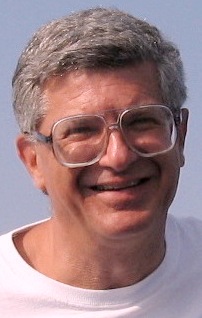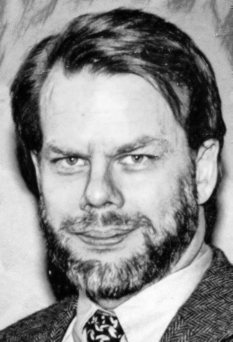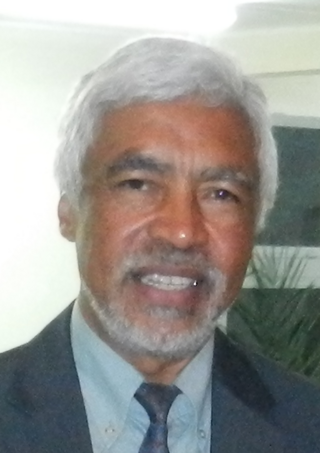Related Research Articles
String field theory (SFT) is a formalism in string theory in which the dynamics of relativistic strings is reformulated in the language of quantum field theory. This is accomplished at the level of perturbation theory by finding a collection of vertices for joining and splitting strings, as well as string propagators, that give a Feynman diagram-like expansion for string scattering amplitudes. In most string field theories, this expansion is encoded by a classical action found by second-quantizing the free string and adding interaction terms. As is usually the case in second quantization, a classical field configuration of the second-quantized theory is given by a wave function in the original theory. In the case of string field theory, this implies that a classical configuration, usually called the string field, is given by an element of the free string Fock space.

Nathan "Nati" Seiberg is an Israeli American theoretical physicist who works on quantum field theory and string theory. He is currently a professor at the Institute for Advanced Study in Princeton, New Jersey, United States.
In theoretical physics and quantum physics, a graviphoton or gravivector is a hypothetical particle which emerges as an excitation of the metric tensor in spacetime dimensions higher than four, as described in Kaluza–Klein theory. However, its crucial physical properties are analogous to a (massive) photon: it induces a "vector force", sometimes dubbed a "fifth force". The electromagnetic potential emerges from an extra component of the metric tensor , where the figure 5 labels an additional, fifth dimension.
Alexander Markovich Polyakov is a Russian theoretical physicist, formerly at the Landau Institute in Moscow and, since 1990, at Princeton University, where he is the Joseph Henry Professor of Physics.
A conformal anomaly, scale anomaly, trace anomaly or Weyl anomaly is an anomaly, i.e. a quantum phenomenon that breaks the conformal symmetry of the classical theory.
Montonen–Olive duality or electric–magnetic duality is the oldest known example of strong–weak duality or S-duality according to current terminology. It generalizes the electro-magnetic symmetry of Maxwell's equations by stating that magnetic monopoles, which are usually viewed as emergent quasiparticles that are "composite", can in fact be viewed as "elementary" quantized particles with electrons playing the reverse role of "composite" topological solitons; the viewpoints are equivalent and the situation dependent on the duality. It was later proven to hold true when dealing with a N = 4 supersymmetric Yang–Mills theory. It is named after Finnish physicist Claus Montonen and British physicist David Olive after they proposed the idea in their academic paper Magnetic monopoles as gauge particles? where they state:
There should be two "dual equivalent" field formulations of the same theory in which electric (Noether) and magnetic (topological) quantum numbers exchange roles.

Édouard Brézin is a French theoretical physicist. He is professor at Université Paris 6, working at the laboratory for theoretical physics (LPT) of the École Normale Supérieure since 1986.
Igor Romanovich Klebanov is an American theoretical physicist. Since 1989, he has been a faculty member at Princeton University where he is currently a Eugene Higgins Professor of Physics and the Director of the Princeton Center for Theoretical Science. In 2016, he was elected to the National Academy of Sciences. Since 2022, he is the Director of the Simons Collaboration on Confinement and QCD Strings.
In quantum field theory the C-theorem states that there exists a positive real function, , depending on the coupling constants of the quantum field theory considered, , and on the energy scale, , which has the following properties:
The non-critical string theory describes the relativistic string without enforcing the critical dimension. Although this allows the construction of a string theory in 4 spacetime dimensions, such a theory usually does not describe a Lorentz invariant background. However, there are recent developments which make possible Lorentz invariant quantization of string theory in 4-dimensional Minkowski space-time.
In physics, the Moyal bracket is the suitably normalized antisymmetrization of the phase-space star product.

Cosmas K. Zachos is a theoretical physicist. He was educated in physics at Princeton University, and did graduate work in theoretical physics at the California Institute of Technology under the supervision of John Henry Schwarz.

David J. E. Callaway is a biological nanophysicist in the New York University School of Medicine, where he is Professor and Laboratory Director. He was trained as a theoretical physicist by Richard Feynman, Kip Thorne, and Cosmas Zachos, and was previously an associate professor at the Rockefeller University after positions at CERN and Los Alamos National Laboratory. Callaway's laboratory discovered potential therapeutics for Alzheimer's disease based upon apomorphine after an earlier paper of his developed models of Alzheimer amyloid formation. He has also initiated the study of protein domain dynamics by neutron spin echo spectroscopy, providing a way to observe protein nanomachines in motion.

David Ian Olive was a British theoretical physicist. Olive made fundamental contributions to string theory and duality theory, he is particularly known for his work on the GSO projection and Montonen–Olive duality.
Thomas L. Curtright is a theoretical physicist at the University of Miami. He did undergraduate work in physics at the University of Missouri, and graduate work at Caltech under the supervision of Richard Feynman.

Augusto Sagnotti is an Italian theoretical physicist at Scuola Normale.

Stephan Narison is a Malagasy theoretical high-energy physicist specialized in quantum chromodynamics (QCD), the gauge theory of strong interactions. He is the founder of the Series of International Conferences in Quantum Chromodynamics (QCD-Montpellier) and of the Series of International Conferences in High-Energy Physics (HEPMAD-Madagascar).
Peter Christopher West, born on 4 December 1951, is a British theoretical physicist at King's College, London and a fellow of the Royal Society.
Paul Stephen Aspinwall is a British theoretical physicist and mathematician, who works on string theory and also algebraic geometry.

Claude Georges Itzykson, was a French theoretical physicist who worked in quantum field theory and statistical mechanics.
References
- ↑ Prof Fairlie's University of Durham web-page
- ↑ Prof Fairlie's physics publications are available on the INSPIRE Database and the GoogleCite database .
- ↑ Fairlie, D. B.; Nielsen, H. B. (1970). "An analogue model for KSV theory". Nuclear Physics B. 20 (3): 637. Bibcode:1970NuPhB..20..637F. doi:10.1016/0550-3213(70)90393-7.; Corrigan, E.; Fairlie, D. B. (1975). "Off-shell states in dual resonance theory" (PDF). Nuclear Physics B. 91 (3): 527. Bibcode:1975NuPhB..91..527C. doi:10.1016/0550-3213(75)90125-X.
- ↑ Fairlie, D. B. (1979). "Higgs fields and the determination of the Weinberg angle". Physics Letters B. 82 (1): 97–100. Bibcode:1979PhLB...82...97F. doi:10.1016/0370-2693(79)90434-9.
- ↑ Fairlie, D. B.; Fletcher, P.; Zachos, C. K. (1989). "Trigonometric structure constants for new infinite-dimensional algebras". Physics Letters B. 218 (2): 203. Bibcode:1989PhLB..218..203F. doi:10.1016/0370-2693(89)91418-4.
- ↑ Corrigan, E.; Fairlie, D. B. (1977). "Scalar field theory and exact solutions to a classical SU (2) gauge theory". Physics Letters B. 67 (1): 69–71. Bibcode:1977PhLB...67...69C. doi:10.1016/0370-2693(77)90808-5.
- ↑ Corrigan, E.; Devchand, C.; Fairlie, D. B.; Nuyts, J. (1983). "First-order equations for gauge fields in spaces of dimension greater than four". Nuclear Physics B. 214 (3): 452. Bibcode:1983NuPhB.214..452C. doi:10.1016/0550-3213(83)90244-4.
- ↑ Fairlie, D. B. (1964). "The formulation of quantum mechanics in terms of phase space functions". Mathematical Proceedings of the Cambridge Philosophical Society. 60 (3): 581–586. Bibcode:1964PCPS...60..581F. doi:10.1017/S0305004100038068.
- ↑ Cosmas K. Zachos, David B. Fairlie, and Thomas L. Curtright, Quantum Mechanics in Phase Space, (World Scientific, Singapore, 2005) ISBN 978-981-238-384-6 .
- ↑ Thomas L Curtright, David B Fairlie, Cosmas K Zachos, A Concise Treatise on Quantum Mechanics in Phase Space, (World Scientific, Singapore, 2014) ISBN 9789814520430